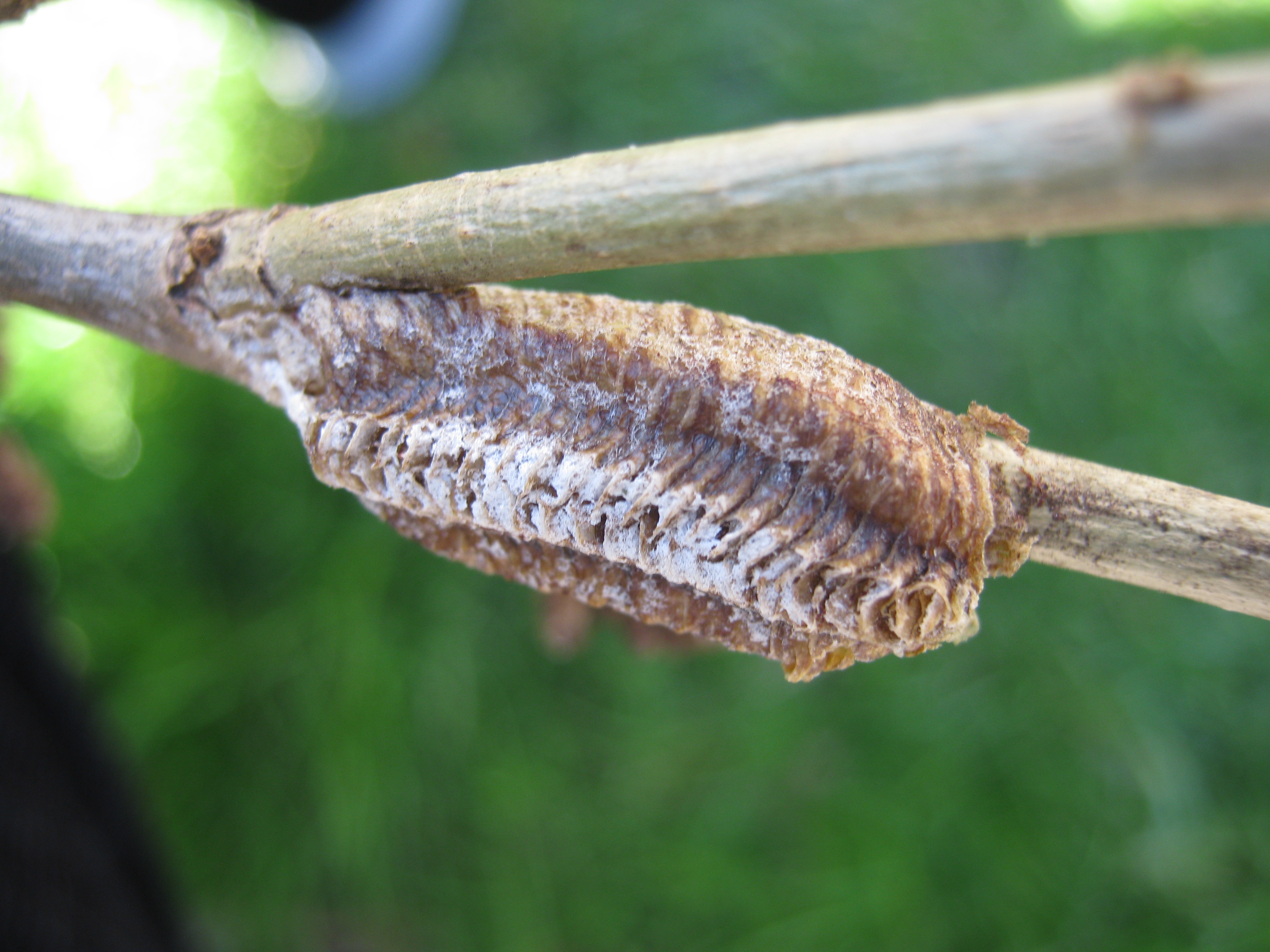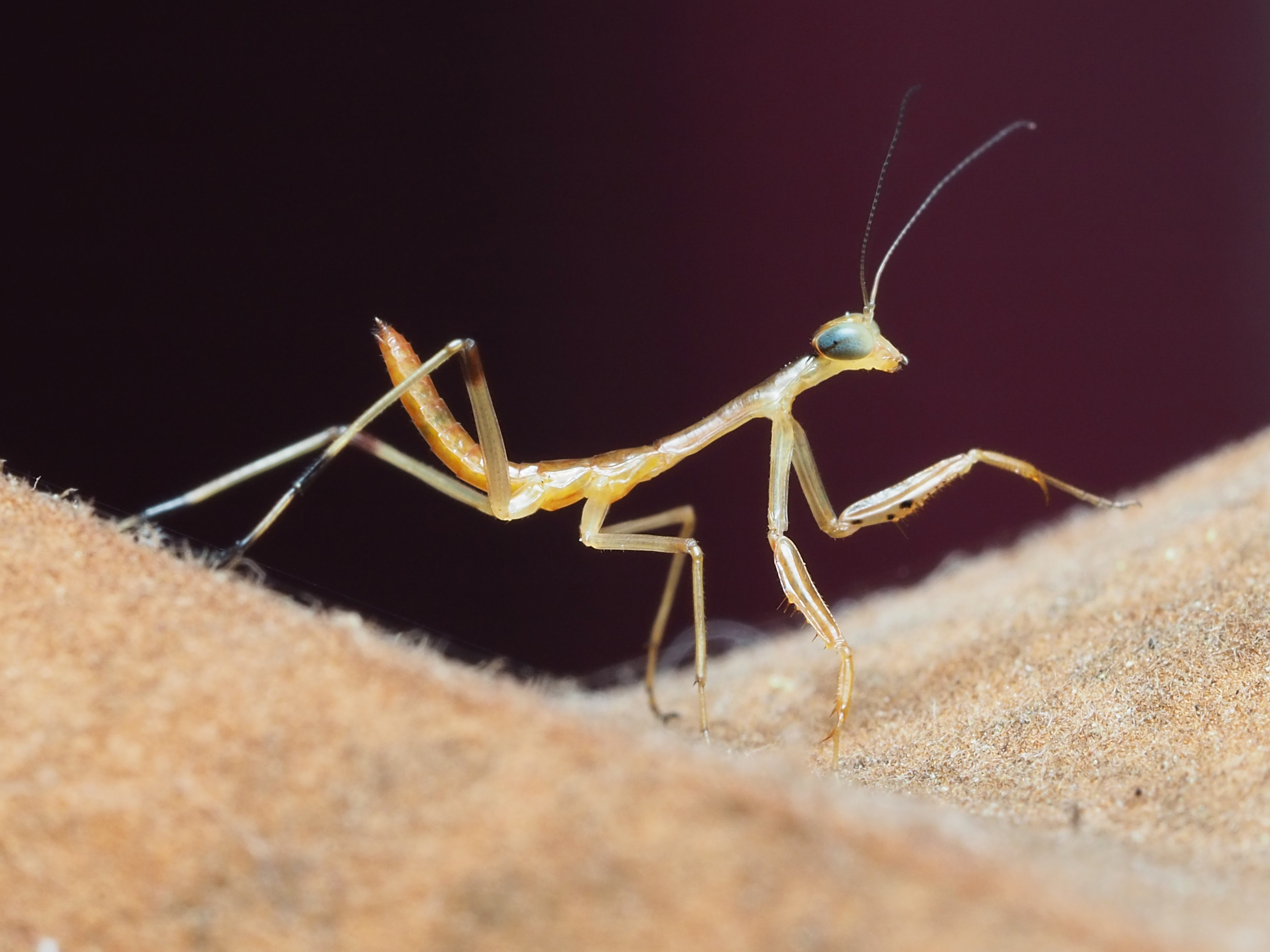Carolina Mantid on:
[Wikipedia]
[Google]
[Amazon]
The Carolina mantis (''Stagmomantis carolina'') is a species of praying mantis of the subfamily 

 The Carolina mantis is the state
The Carolina mantis is the state
Mantodea.speciesifle.org species Stagmomantis carolina (Johansson, 1763) Retrieved Date:2014/June/27
Stabheuschrecken und Gottesanbeterinnen im Terrarium
Bugguide.net Species ''Stagmomantis carolina'' - Carolina Mantis
* David Edwin Hill: Carolina Mantis (''Stagmomantis carolina'') feeding on tettigonid cricket â€
Video
* {{Taxonbar, from1=Q580291, from2=Q4840076 Fauna of the Southeastern United States Insects described in 1763 Mantidae Mantodea of North America
Stagmomantinae
The Stagmomantinae are a subfamily of mantids within the family Mantidae, found in the Americas
The Americas, which are sometimes collectively called America, are a landmass comprising the totality of North and South America. The Americ ...
.
Sexual cannibalism occurs in roughly one quarter of all intersexual encounters of this species, though specimens of this species will engage in cannibalism regardless of age or gender if the opportunity presents itself.


 The Carolina mantis is the state
The Carolina mantis is the state insect
Insects (from Latin ') are pancrustacean hexapod invertebrates of the class Insecta. They are the largest group within the arthropod phylum. Insects have a chitinous exoskeleton, a three-part body ( head, thorax and abdomen), three pairs ...
of South Carolina
)''Animis opibusque parati'' ( for, , Latin, Prepared in mind and resources, links=no)
, anthem = " Carolina";" South Carolina On My Mind"
, Former = Province of South Carolina
, seat = Columbia
, LargestCity = Charleston
, LargestMetro = ...
. Oothecae can be purchased in garden supply centers as a means of biological control of pest insects. However, only those labeled as this species should be released because most oothecae sold in the United States belong to the invasive Chinese mantis
The Chinese mantis (''Tenodera sinensis'') is a species of mantis native to Asia and the nearby islands. In 1896 this species was accidentally introduced by a nursery tender at Mt. Airy near Philadelphia, United States. ''Tenodera sinensis'' oft ...
.
Description
Adult females are 47 to 60 millimeters (2-2.5 inches) in length while adult males are usually about 54 millimeters (2.2 inches) in length. Firstinstar
An instar (, from the Latin '' Ä«nstar'', "form", "likeness") is a developmental stage of arthropods, such as insects, between each moult (''ecdysis''), until sexual maturity is reached. Arthropods must shed the exoskeleton in order to grow or ass ...
nymphs are 7-12 millimeters (.028-.047 inches) in length. When the nymphs eat more, their abdomens get much longer. The Carolina mantis has a dusty brown, gray or green color useful as camouflage
Camouflage is the use of any combination of materials, coloration, or illumination for concealment, either by making animals or objects hard to see, or by disguising them as something else. Examples include the leopard's spotted coat, the ...
in certain environments. The Carolina mantis' color varies because the nymphs are able to adjust their color to match the environment they are in at the time of molting. They can adjust their color over each molt, if necessary, until they reach their final molt to adulthood. An unusual trait is that its wings only extend three-quarters of the way down the abdomen in mature females; this trait is also seen in ''Iris oratoria
''Iris oratoria'', known by the common name Mediterranean mantis (or less frequently iris mantis), due to humans first studying it in lands around the Mediterranean Sea, is a species of praying mantis. Its range is expanding in the Middle East, ...
'', which can be distinguished by the large eyespots on the hind wings (inner wings) of both adult male and female ''Iris oratoria
''Iris oratoria'', known by the common name Mediterranean mantis (or less frequently iris mantis), due to humans first studying it in lands around the Mediterranean Sea, is a species of praying mantis. Its range is expanding in the Middle East, ...
''. Both adult male and female ''Stagmomantis carolina'' have a dark-coloured dot on each of their forewings (outer wings), which may be partially hidden in a brown or dark colour morph individual.
Distribution and habitat
''Stagmomantis carolina'' is native to the Americas and can be found from the United States southwards to Brazil.Mantodea.speciesifle.org species Stagmomantis carolina (Johansson, 1763) Retrieved Date:2014/June/27
References
Stabheuschrecken und Gottesanbeterinnen im Terrarium
External links
Bugguide.net Species ''Stagmomantis carolina'' - Carolina Mantis
* David Edwin Hill: Carolina Mantis (''Stagmomantis carolina'') feeding on tettigonid cricket â€
Video
* {{Taxonbar, from1=Q580291, from2=Q4840076 Fauna of the Southeastern United States Insects described in 1763 Mantidae Mantodea of North America